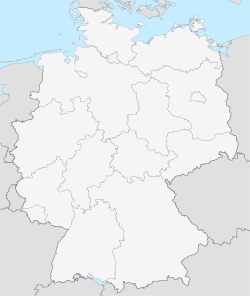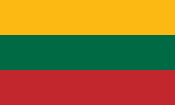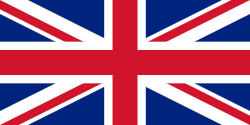Mannheim
| Mannheim | |
| Coat of arms | Location |
 |
 |
| Administration | |
| Country | Germany |
|---|---|
| State | Baden-Württemberg |
| Admin. region | Karlsruhe |
| District | Urban district |
| Lord Mayor | Peter Kurz (SPD) |
| Basic statistics | |
| Area | 144.96 km² (56 sq mi) |
| Elevation | 97 m (318 ft) |
| Population | 327,318 (29/09/2006) |
| - Density | 2,258 /km² (5,848 /sq mi) |
| Other information | |
| Time zone | CET/CEST (UTC+1/+2) |
| Licence plate | MA |
| Postal codes | 68001–68309 |
| Area codes | +49 621 |
| Website | www.mannheim.de |



Mannheim is a city in Germany. With 327,318 inhabitants it is the second-largest city in the state of Baden-Württemberg after the capital Stuttgart.
Mannheim is situated at the confluence of the rivers Rhine and Neckar, in the northwestern corner of the state of Baden-Württemberg. The Rhine separates Mannheim from the adjacent Rhineland-Palatinate city of Ludwigshafen. The Hessian border is north of the city. Mannheim is the largest city of the Rhine Neckar Area, a metropolitan area with 2.4 million inhabitants.
Mannheim is unusual among German cities in that its central area is laid out in a grid pattern (called Quadrate, squares), much like many North American cities. The main route through the squares leads to an enormous 18th-century palace. This former seat of the Electors of the Palatinate now houses the University of Mannheim.
Mannheim's city symbol is der Wasserturm (the water-tower), located in the east of the city centre.
Contents |
History
Mannheim is first mentioned in a document from 766, the "Codex Laureshamensis" from the Lorsch Cloister. It is listed as "Mannenheim" (Home of Manno). It remained a village until Frederick IV, Elector Palatine initiated building the fortress Friedrichsburg and the adjacent grid-like city core in 1606. On 24 January1607 he gave Mannheim city privileges.
The city was destroyed subsequently in the Thirty Years' War in 1622 by Tilly's troops, and in the Nine Years War for the Palatinate succession in 1689 by the French.
After the rebuilding since 1698, the capital of the Electoral Palatinate was transferred from Heidelberg to Mannheim in 1720. It was then that Karl III Philip, Elector Palatine began construction of the Mannheim Palace and the Jesuit Church. They were completed in 1760.
In the 18th century, Mannheim was home to the so-called Mannheim School of classical composers. It was reputed to have one of the best court orchestras in Europe under the leadership of Carlo Grua. The court left Mannheim in 1778 and two decades later, Mannheim was transferred to the Grand Duchy of Baden in 1802.
In 1819 Norwich Duff made the following observations:
Mannheim is in the Duchy of Baden and situated at the confluence of the Rhine and Neckar over both of which there is a bridge of boats. This is the third town of this name having been twice burnt. The houses are large, and the streets broad and at right angles to each other, and is one of the most airy clean towns I have seen in Germany. It was formerly fortified but the fortifications were rased in 1806 and gardens fill their places. There is a large Chateau here belonging to the Grand Duke and a very good garden; part of the Chateau was destroyed when the town was bombarded and has never since been repaired, the other part is occupied by the Grand Duchess widow of the late Grand Duke who was succeeded by his Uncle having left only three daughters. She is the sister of Eugene Beauharnais [so presumably she was born Hortense de Beauharnais daughter by her former marriage of Napoleon Buonaparte's Empress Josephine]. There is a Cathedral, a Theatre which is considered good, an observatory, a gallery of pictures at the Chateau and some private collections. About 2 km (1 mile) below the town the Russian Army crossed the Rhine in 1813. Population 18 300.
Inventions
Some important inventions were made in Mannheim.
- Karl Drais built the first two-wheeled draisine in 1817.
- Carl Benz' first car appeared on the streets of Mannheim in 1886. At his workshop in Mannheim he produced a lightweight three-wheeled vehicle powered by a single cylinder petrol/gasoline-fueled engine, first shown in public around 1886. This powered tricycle subsequently came to be widely regarded as the original automobile/motor car.
- The Lanz Bulldog, a popular tractor with a rugged, simple Diesel engine was introduced in 1921.
- Julius Hatry built the world's first rocket plane in 1929.
World War II
During World War II, Mannheim (as a key industrial center) was heavily damaged by U.S. and British bombing. The inner city area was practically annihilated.
The purpose of the British strategic bombing campaign was to kill as many enemy civilians as possible, breaking their morale through this terror and thus causing a surrender.[1]The first deliberate "terror bombing" of German civilians was the December 16, 1940 bombing of Mannheim.[2]
The city was occupied by the U.S. Army on March 291945. There has been a large American military presence in the Mannheim area ever since (see United States military installations below).

In 2007, Mannheim celebrated its 400th birthday with a series of cultural and other events spread over the whole year. The 400th birthday proper was in 2006, since Frederick IV, Elector Palatine laid the foundations of the Mannheim citadel, on March 171606.
Theatre
The "Nationaltheater Mannheim" was founded in 1779 and is the oldest "Stage" in Germany. In 1782 the premier of "Die Räuber" written by Friedrich Schiller was shown.
Main sights



- Fernmeldeturm Mannheim
- Luisenpark - named one of the most beautiful parks of Europe
- Pylon test facility Mannheim
- Mannheim Palace (Mannheimer Schloss) - the city castle and main building of the University of Mannheim
- Wasserturm - the town's landmark
- SAP Arena - multifunctional Stadium, home of the Mannheim Ice-hockey Team "Die Adler", which means "The Eagles."
- Breite Strasse, Kunststrasse and Kapuzinerplanken - Mannheims main shopping destination
- International Filmfestival Mannheim-Heidelberg
- Wildpark and Waldvogelpark am Karlstern
Industry
The successor to the Karl Benz automobile manufacturing companies begun in Mannheim, Daimler AG has had a large presence in Mannheim. Today, diesel engines and buses are assembled there. The Swiss Roche Diagnostic group (formerly known as Boehringer Mannheim) has its division headquarters in Mannheim. Additionally, the city also hosts large factories and offices of ABB, Alstom, BASF (Ludwigshafen), Bilfinger Berger, Bombardier, Fuchs Petrolub AG, John Deere, Siemens, SCA, Südzucker and other companies.
United States military installations
A number of United States military installations are present in Mannheim, including the headquarters of the 5th Signal Command, the Army's telecommunications command in the European area. The following installations make up the U.S. Army Garrison Mannheim:
- Benjamin Franklin Village (Mannheim-Käfertal) Also home to the Mannheim American High School and Middle School [1].
- Coleman Barracks/Coleman Army Airfield (Mannheim-Schönau) (American Forces Network-Europe HQ, U.S. Army Confinement Facility Europe) Also home to the 28th Transportation Battalion
- Funari Barracks (Mannheim-Käfertal) (5th Signal Command headquarters)
- Spinelli Barracks (Mannheim-Feudenheim)
- Sullivan Barracks (Mannheim-Käfertal) (7th Signal Brigade headquarters) (Headquarters of 504th Signal Battalion, 1961 - 1965)
- Taylor Barracks (Mannheim-Vogelstang) (2nd Signal Brigade headquarters)
The following installations are part of the U.S. Army Garrison Heidelberg but are within the area of the city of Mannheim:
- Friedrichsfeld Service Center (Mannheim-Friedrichsfeld)
- Hammonds Barracks (Mannheim-Seckenheim)
- Stem Kaserne (Mannheim-Seckenheim)
The long-term future of the Mannheim military community is in doubt since it was not included in U.S. Army Europe's 2004 announcement of those military communities that would remain after a long-term restructuring and downsizing of U.S. forces in Europe. The U.S. Army has already closed installations in Mannheim such as Gendarmerie Kaserne in Schönau, the NATO bunker in Feudenheim and Turley Barracks in Wohlgelegen.
Transportation

The Mannheim/Ludwigshafen area is surrounded by a ring of motorways connecting it to Frankfurt in the north, Karlsruhe in the south, Saarbrücken in the west and Nürnberg in the east.
Mannheim Hauptbahnhof (central station) is at the end of the Mannheim-Stuttgart high-speed rail line and is the most important railway junction in the southwest of Germany, served by ICE high-speed train system with connections to Frankfurt am Main / Berlin, Karlsruhe / Basel and Stuttgart / Munich. Mannheim Harbour is the second largest river port in Germany.
The establishment of the RheinNeckar S-Bahn on 2003 connected nearly all of the Rhine-Neckar area, including lines into the Palatinate, Odenwald and southern Hesse. All S-Bahn lines run through Mannheim Hauptbahnhof. Further S-Bahn stations are at present Mannheim-Rangierbahnhof, Mannheim-Seckenheim and Mannheim-Friedrichsfeld-Süd.
Local public transport in Mannheim include eleven tram lines and numerous bus lines operated by Rhein-Neckar-Verkehr (Rhine-Neckar transport). Metre-gauge trams are operated in Mannheim by the MVV Verkehr AG and in Ludwigshafen by the Verkehrsbetriebe Ludwigshafen am Rhein and run through on each other tracks. In addition the Oberrheinische Eisenbahn-Gesellschaft (OEG), operates interurban trams on a triangular route between Mannheim, Heidelberg and Weinheim and the Rhein-Haardtbahn operates interurban trams between Bad Dürkheim, Ludwigshafen and Mannheim, both also running on MVV tracks. In the 1970s a proposal to build a U-Bahn out of the Mannheim and Ludwigshafen tramways was begun, but only small sections were in fact built due to lack of funds. The only underground station in Mannheim is the Haltestelle Dalbergstraße. U-Bahn planning has now stopped. All public transport is offered at uniform prices set by the Verkehrsverbund Rhein-Neckar (Rhine-Neckar transport union, VRN).
Although Frankfurt International Airport is only 65 km north, since 2004 there have been daily passenger flights from Mannheim City Airport (IATA code MHG) to Berlin, Hamburg and Saarbrücken.
Sport

Mannheim hosted the 2007 European Show Jumping Championships[3] 14 - 19 August, in the MVV-riding stadium. This is second time the city has hosted it, it previously held the championships in 1997.
The Adler Mannheim is an ice hockey team playing in the German Hockey League, winning the championship six times.
The WWE visited Mannheim in 2008 and grossed over half a million dollars with over 6500 fans attending the event.
Sister cities
 Bydgoszcz, Poland
Bydgoszcz, Poland Chişinău, Moldova
Chişinău, Moldova Haifa, Israel
Haifa, Israel Klaipėda, Lithuania
Klaipėda, Lithuania
 Swansea, United Kingdom
Swansea, United Kingdom Toulon, France
Toulon, France Windsor, Canada
Windsor, Canada Zhenjiang, People's Republic of China
Zhenjiang, People's Republic of China
Famous people born in Mannheim
- 1821: Friedrich Engelhorn († 11. March 1902 in Mannheim), founder of BASF
- 1856: Henry Morgenthau, Sr., United States politician and manager
- 1897: Sepp Herberger, coach of the German national soccer team from 1936-64 ("The Miracle of Bern", world champion with his team in 1954)
- 1905: Albert Speer, Nazi architect, Minister for Armaments and Munitions during World War II
- 1939: Christiane Schmidtmer, actress
- 1969: Steffi Graf, tennis player
- 1971: Xavier Naidoo, pop singer
- 1972: Christian Wörns, football player for Borussia Dortmund and formerly Germany
- 1977: Jochen Hecht, Buffalo Sabre National Hockey League
- See also: Famous people from Mannheim (German)
References
- ↑ http://books.google.com/books?id=IrAzsxzjIooC&pg=PA352&dq=Spaight+bombing+vindicated&as_brr=3&sig=g9rLxzD_r0vjxT5HLiBAAueiYyE
- ↑ http://books.google.com/books?id=8J2-kzMxbKYC&pg=PA507&dq=%22Germany+and+the+Second+World+War%22+%22deliberate+terror%22+Mannheim&as_brr=3&sig=bFzGao4uHyptBHQTiDx0y1DzXWg
- ↑ FEI European Jumping Championship, Mannheim
External links
- Official page of Mannheim
- Mannheim travel guide from Wikitravel
- Rhein-Neckar Metropoliten Region Visitors' Site
- Parks in Mannheim
- 504th Signal Battalion Photos and maps of Benjamin Franklin Village (Käfertal), Sullivan Barracks (Käfertal)and the Mannheim Military Community in the 1960s
- U.S. Army Garrison Mannheim homepage
|
|
Important cities and tourist sites in Germany: Area of Heidelberg / Rhine-Neckar |
|
||||||||
|---|---|---|---|---|---|---|---|---|---|---|
|
||||||||||
|
||||||||